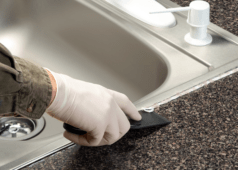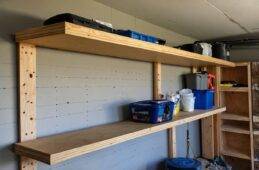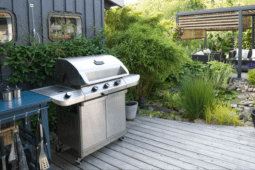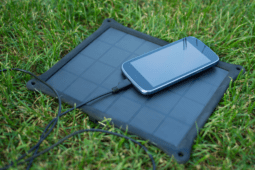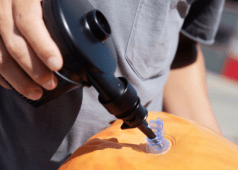How to: Make Simple and Easy DIY Stacking Wooden Storage Cubes

With all music heading to online streaming, I tend to buy my favorite albums on vinyl so I can cherish them for years to come. As my collection grows my need for space grows with it. So I had to quickly find a solution. Here’s a simple project to create some stacking cubes that will hold records, books and more!
Here’s what you’ll need:
- 2 – 12″x 8′ x .5″ glued, paint grade pine boards
- Box of .5″ wood screws
- 2 4’x 1.5″ angled aluminum
- Metal countersink
- Drill bit to match your .5″ screws
- Hack Saw
- Clamps
- Sandpaper or Sanding Station
- Measuring tape
Before you get started, I recommend you crank up the best “workin’ hard” playlist you have. It’s certainly appropriate for this project.

Start by grabbing your largest vinyl, book, bottle or magazine you want to place in your cubes. You’ll use this to base your cuts. I chose one of my favorites and it measures 12.5″all around, which is standard for most vinyls.
 Using a table saw or circular saw, cut your boards to an equal length. I cut each of my boards 15″ long. I’m making two cubes, so I cut 8 boards in all.
Using a table saw or circular saw, cut your boards to an equal length. I cut each of my boards 15″ long. I’m making two cubes, so I cut 8 boards in all.
 Once you’ve cut your boards, set them aside and grab your angle aluminum.
Once you’ve cut your boards, set them aside and grab your angle aluminum.
Please Note: Cutting and shaping metal can increase your chances of hurting yourself ten-fold. Wear gloves and safety goggles at all times! Also, learn from my near 9-1-1 experience and DO NOT use a miter or table saw to cut angle metal unless you have experience doing so.

Measure and mark a width just shy of the width of the box or be like me and don’t measure! I used the first cut piece as a template for the others.

Use a hack saw to cut your pieces to proper length. Don’t forget to wear glasses and gloves. The metal gets hot and flings tiny aluminum pieces everywhere!

I used my sanding station (80 grit) to sand the cuts and straighten them out. Let’s be honest, it’s hard to saw a straight line with a hack saw.

These are ready to go!

Using a ruler or a sliding guide, set your hole marks. I spaced 5 holes evenly over ~12″. Because I’m joining the boards by overlapping, not mitering, it’s important to set your holes closer to the base (opposite of the peak) of each piece. On this 1.5″ wide side, I set the holes 0.5″ from the bottom.
Note: Make one with proper measurements, drill your holes and use this piece to trace the holes on all the other pieces you have left.

Using a waste chunk of wood, I set my aluminum up at the drill press, drilled holes then went back with a countersink. I set my countersink depth to allow my screws to sit slightly above the surface. This way, I could accentuate the industrial feel I’m looking for.

It’s time to assemble! It’s as easy as attaching the aluminum to the wood into a box shape. I didn’t have to pre-drill holes into the wood due to the stubby 0.5″ screws. I didn’t have any problems with wood cracking. If you’re worried about that happening, feel free to do so.
I will do my best to explain this. With the angle piece set facing up (like in the picture above) I had better, tighter fitting joints when I set the tip of each screw to bottom of the hole in the aluminum. When you drive in the screw it will center itself and pull the aluminum down, creating a closer fit.
 Finished! Now, do it all over again until you have enough to handle your entire record collection.
Finished! Now, do it all over again until you have enough to handle your entire record collection.

For a final touch, I cut 2 pieces leftover board to place between the two crates to create nice floating effect.

Other ideas to upgrade your boxes:
- Stain or paint the boards
- Brush the aluminum with steel wool for a stainless look
- Make the boxes into crates by adding a back panel
- Add another panel and hinges to make a cabinet
- If you want to make boxes larger than the ones presented I recommend that you strengthen the butt joints with glue and screws, then cover over the corners with the aluminum plates. If you’re really handy you can also use a dowel system and add dowel rods to the end grain, or use a biscuit jointer for support.
Go make stuff!
Updated from an article originally published March 11, 2015.



